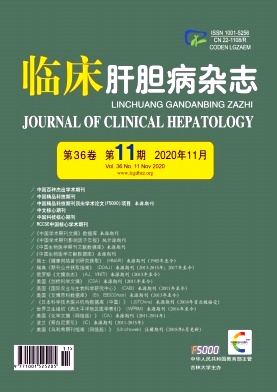|
[1] KIRTI D,KANCHAN M,ASHU SB,et al. Effect of progressive resistance exercise training on hepatic fatin asian indians with non-alcolic fatty liver disease[J]. British J Med Med Res,2014,4(1):114-124.
|
|
[2] National Workshop on Fatty Liver and Alcoholic Liver Disease,Chinese Society of Hepatology,Chinese Medical Association;Fatty Liver Expert Committee,Chinese Medical Doctor Association. Guidelines of prevention and treatment for alcoholic liver disease:A 2018 update[J]. J Clin Hepatol,2018,34(5):939-946.(in Chinese)中华医学会肝病学分会脂肪肝和酒精性肝病学组,中国医师协会脂肪性肝病专家委员会.酒精性肝病防治指南(2018年更新版)[J].临床肝胆病杂志,2018,34(5):939-946.
|
|
[3] OH S,SO R,SHIDA T,et al. High-intensity aerobic exercise improves both hepatic fat content and stiffness in sedentary obese men with nonalcoholic fatty liver disease[J]. Sci Rep,2017,7:43029.
|
|
[4] ARORA C,MALHOTRA A,RANJAN P,et al. Lifestyle intervention framework for obese patients with non-alcoholic fatty liver disease-a tool for health professionals in resource constraint settings[J]. Cureus,2019,11(10):e5999.
|
|
[5] YASUTAKE K,KOHJIMA M,KOTOH K,et al. Dietary habits and behaviors associated with nonalcoholic fatty liver disease[J]. World J Gastroenterol,2014,20(7):1756-1767.
|
|
[6] SCHWIMMER JB,UGALDE-NICALO P,WELSH JA,et al.Effect of a low free sugar diet vs usual diet on nonalcoholic fatty liver disease in adolescent boys:A randomized clinical trial[J]. JAMA,2019,321(3):256-265.
|
|
[7] YU Y,ZHU L,HU M,et al. Green therapy for nonalcoholic fatty liver disease in recent five years[J]. J Milit Physic Educ Sports,2016,35(4):101-104.(in Chinese)于洋,朱琳,胡敏,等.近五年非酒精性脂肪肝运动疗法的研究进展[J].军事体育学报,2016,35(4):101-104.
|
|
[8] RINELLA ME. Nonalcoholic fatty liver disease:A systematic review[J]. JAMA,2015,313(22):2263-2273.
|
|
[9] YKI-JARVINEN H. Non-alcoholic fatty liver disease as a cause and a consequence of metabolic syndrome[J]. Lancet Diabetes Endocrinol,2014,2(11):901-910.
|
|
[10] YOUNOSSI ZM,KOENIG AB,ABDELATIF D,et al. Global epidemiology of nonalcoholic fatty liver disease-Meta-analytic assessment of prevalence, incidence, and outcomes[J]. Hepatology,2016,64(1):73-84.
|
|
[11] VERNON G,BARANOVA A,YOUNOSSI ZM. Systematic review:The epidemiology and natural history of non-alcoholic fatty liver disease and non-alcoholic steatohepatitis in adults[J]. Aliment Pharmacol Ther,2011,34(3):274-285.
|
|
[12] FAN JG. Epidemiology of alcoholic and nonalcoholic fatty liver disease in China[J]. J Gastroenterol Hepatol,2013,28(Suppl 1):11-17.
|
|
[13] European Association for the Study of the Liver(EASL),European Association for the Study of Diabetes(EASD),European Association for the Study of Obesity(EASO). EASL-EASD-EASO Clinical Practice Guidelines for the management of non-alcoholic fatty liver disease[J]. J Hepatol,2016,64(6):1388-1402.
|
|
[14] HASHIDA R,KAWAGUCHI T,BEKKI M,et al. Aerobic vs. resistance exercise in non-alcoholic fatty liver disease:A systematic review[J]. J Hepatol,2017,66(1):142-152.
|
|
[15] JOHNSON NA,SACHINWALLA T,WALTON DW,et al. Aerobic exercise training reduces hepatic and visceral lipids in obese individuals without weight loss[J]. Hepatology,2009,50(4):1105-1112.
|
|
[16] SULLIVAN S,KIRK EP,MITTENDORFER B,et al. Randomized trial of exercise effect on intrahepatic triglyceride content and lipid kinetics in nonalcoholic fatty liver disease[J]. Hepatology,2012,55(6):1738-1745.
|
|
[17] KATSAGONI CN,GEORGOULIS M,PAPATHEODORIDIS GV,et al. Effects of lifestyle interventions on clinical characteristics of patients with non-alcoholic fatty liver disease:A metaanalysis[J]. Metabolism,2017,68:119-132.
|
|
[18] THOMPSON D,MARKOVITCH D,BETTS JA,et al. Time course of changes in inflammatory markers during a 6-mo exercise intervention in sedentary middle-aged men:A randomized-controlled trial[J]. J Appl Physiol(1985),2010,108(4):769-779.
|
|
[19] OH S,TANAKA K,WARABI E,et al. Exercise reduces inflammation and oxidative stress in obesity-related liver diseases[J]. Med Sci Sports Exerc,2013,45(12):2214-2222.
|
|
[20] OH S,TANAKA K,TSUJIMOTO T,et al. Regular exercise coupled to diet regimen accelerates reduction of hepatic steatosis and associated pathological conditions in nonalcoholic fatty liver disease[J]. Metab Syndr Relat Disord,2014,12(5):290-298.
|
|
[21] ZHANG HJ,HE J,PAN LL,et al. Effects of moderate and vigorous exercise on nonalcoholic fatty liver disease:A randomized clinical trial[J]. JAMA Intern Med,2016,176(8):1074-1082.
|
|
[22] ABDELBASSET WK,TANTAWY SA,KAMEL DM,et al. A randomized controlled trial on the effectiveness of 8-week highintensity interval exercise on intrahepatic triglycerides,visceral lipids,and health-related quality of life in diabetic obese patients with nonalcoholic fatty liver disease[J]. Medicine(Baltimore),2019,98(12):e14918.
|
|
[23] GUO R,LIONG EC,SO KF,et al. Beneficial mechanisms of aerobic exercise on hepatic lipid metabolism in non-alcoholic fatty liver disease[J]. Hepatobiliary Pancreat Dis Int,2015,14(2):139-144.
|
|
[24] CHO J,LEE I,KIM D,et al. Effect of aerobic exercise training on non-alcoholic fatty liver disease induced by a high fat diet in C57BL/6 mice[J]. J Exerc Nutrition Biochem,2014,18(4):339-346.
|
|
[25] MAROSI K,BORI Z,HART N,et al. Long-term exercise treatment reduces oxidative stress in the hippocampus of aging rats[J]. Neuroscience,2012,226:21-28.
|
|
[26] KAWANISHI N,YANO H,MIZOKAMI T,et al. Exercise training attenuates hepatic inflammation,fibrosis and macrophage infiltration during diet induced-obesity in mice[J]. Brain Behav Immun,2012,26(6):931-941.
|
|
[27] FEALY CE,HAUS JM,SOLOMON TP,et al. Short-term exercise reduces markers of hepatocyte apoptosis in nonalcoholic fatty liver disease[J]. J Appl Physiol(1985),2012,113(1):1-6.
|







 DownLoad:
DownLoad: